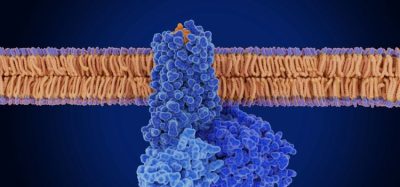‘Perfect’ polymer pill proves it can deliver
Posted: 2 August 2018 | European Pharmaceutical Review | No comments yet
The crystal structure was found to have a half-life of 24 hours and could last in the bloodstream for more than 96 hours…


For a long time, scientists have struggled with packaging a drug in order for it to be suitable for drug delivery in the body. They have thought about how much packaging will keep the drug safe, whether the material used is correct, if it is too big or heavy, whether it will withstand bodily functions and if the packaging would get the drug to the correct area of the body.
Researchers from Drexel University have developed a new ‘container’ that they have mentioned to be ‘perfect’ for the delivery of drugs.
It has long since been known that the best and easiest way of targeting a specific area to treat is intravenously, however to produce a vessel that travels through the bloodstream delivering a drug to a specific site and releasing it at the right time is difficult and requires special engineering.
The human body knows to detect and destroy foreign objects, so effectively designing a delivery system becomes even more difficult.
“Delivery vessels have traditionally been designed to avoid recognition by the immune system by mimicking naturally occurring materials in the body, such as cells or liposomes,” said Professor Professor Christopher Li.
“But the problem with the previously reported artificial carriers is that they’re not always durable enough to get to the far reaches of the body.”
Prof Li and Assistant Professor Hao Cheng lead a team of researchers who have been developing a crystal casing for intravenous medicine delivery. These ‘crystalsomes’ have been designed to be durable for long intravenous journeys and outlast current nanoparticle packaging. This means that doctors can use this packaging to treat disease with the exact amount of medication they deem appropriate.
“Crystalsomes structurally mimic the classical liposome and polymersomes used for drug delivery, yet mechanically they are more robust thanks to their single crystal-like shell,” said Prof Li.
In experimental research, the crystal structure was found to have a half-life of 24 hours and could last in the bloodstream for more than 96 hours. These figures exceed the current injectable medicine.
“Crystalsomes are closely sealed so that medication will not be released until it reaches the target sites. Thus, medication can be delivered in higher doses, as desired, to afflictions in the body, without causing severe side-effects associated with the early release of the medicine,” Prof Li explained.
“And a more direct intravenous delivery means that treatments are likely to be more effective.”
The team combined work on growing the crystal spheres and self-assembled nanobrushes, producing a capsule that is thick enough to encase the drug, featuring a range of polymer strands in order to prevent being destroyed or recognised as foreign.
Two sets of polymers make up these crystalsomes, poly L-lactide (PLLA) and poly ethylene glycol (PEG). PLLA draws together to form a corrugated surface of the casing, while PEG produces itself as tiny hairs on the surface. These prevent the vessel attaching to solid surfaces, and avoid it being recognised as foreign and being removed by the body.
“Taken together, these characteristics give the crystalsome its superior staying power in the bloodstream,” said Prof Cheng.
The team suggest that this discovery could lead to a new class of polymer nanoparticle drug carriers to aid drug delivery.
The study was published in Nature Communications.
Related topics
Biopharmaceuticals, Drug Delivery Systems, Research & Development (R&D)









